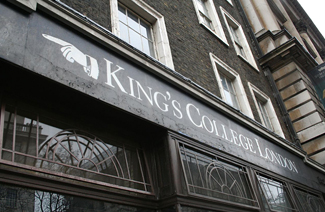China has one of the world's oldest continuous civilizations—despite invasions and occasionalforeign rule. A country as vast as China with so long-lasting a civilization has a complex socialand visual history, within which pottery and porcelain play a major role.
The function and status of ceramics in China varied from dynasty to dynasty, so they may beutilitarian, burial, trade-collectors', or even ritual objects, according to their quality and theera in which they were made. The ceramics fall into three broad types—earthenware, stoneware,and porcelain—for vessels, architectural items such as roof tiles, and modeled objects andfigures. In addition, there was an important group of sculptures made for religious use, themajority of which were produced in earthenware.
The earliest ceramics were fired to earthenware temperatures, but as early as the fifteenthcentury B.C., high-temperature stonewares were being made with glazed surfaces. During theSix Dynasties period (AD 265-589), kilns in north China were producing high-fired ceramics ofgood quality. Whitewares produced in Hebei and Henan provinces from the seventh to thetenth centuries evolved into the highly prized porcelains of the Song dynasty (AD. 960-1279),long regarded as one of the high points in the history of China's ceramic industry. Thetradition of religious sculpture extends over most historical periods but is less clearlydelineated than that of stonewares or porcelains, for it embraces the old custom of earthenwareburial ceramics with later religious images and architectural ornament. Ceramic products alsoinclude lead-glazed tomb models of the Han dynasty, three-color lead-glazed vessels andfigures of the Tang dynasty, and Ming three-color temple ornaments, in which the motifs wereoutlined in a raised trail of slip- as well as the many burial ceramics produced in imitation ofvessels made in materials of higher intrinsic value.
Trade between the West and the settled and prosperous Chinese dynasties introduced newforms and different technologies. One of the most far-reaching examples is the impact of thefine ninth-century AD. Chinese porcelain wares imported into the Arab world. So admired werethese pieces that they encouraged the development of earthenware made in imitation ofporcelain and instigated research into the method of their manufacture. From the Middle Eastthe Chines acquired a blue pigment—a purified form of cobalt oxide unobtainable at thattime in China—that contained only a low level of manganese. Cobalt ores found in China have ahigh manganese content, which produces a more muted blue-gray color. In the seventeenthcentury, the trading activities of the Dutch East India Company resulted in vast quantities ofdecorated Chinese porcelain being brought to Europe, which stimulated and influenced thework of a wide variety of wares, notably Delft. The Chinese themselves adapted many specificvessel forms from the West, such as bottles with long spouts, and designed a range ofdecorative patterns especially for the European market.
Just as painted designs on Greek pots may seem today to be purely decorative, whereas infact they were carefully and precisely worked out so that at the time, their meaning was clear,so it is with Chinese pots. To twentieth century eyes, Chinese pottery may appear merelydecorative, yet to the Chinese the form of each object and its adornment had meaning andsignificance. The dragon represented the emperor, and the phoenix, the empress; thepomegranate indicated fertility, and a pair of fish, happiness; mandarin ducks stood forwedded bliss; the pine tree, peach, and crane are emblems of long life; and fish leaping fromwaves indicated success in the civil service examinations. Only when European decorativethemes were introduced did these meanings become obscured or even lost.
From early times pots were used in both religious and secular contexts. The imperial courtcommissioned work and in the Yuan dynasty (A.D. 1279-1368) an imperial ceramic factorywas established at Jingdezhen. Pots played an important part in some religious ceremonies.Long and often lyrical descriptions of the different types of ware exist that assist in classifyingpots, although these sometimes confuse an already large and complicated picture.
Paragraph 2:The function and status of ceramics in China varied from dynasty to dynasty,so they may be utilitarian, burial, trade-collectors', or even ritual objects, according to theirquality and the era in which they were made. The ceramics fall into three broad types—earthenware, stoneware, and porcelain—for vessels, architectural items such as roof tiles,and modeled objects and figures. In addition, there was an important group of sculpturesmade for religious use, the majority of which were produced in earthenware.
1.The word status in the passage is closest in meaning to
origin
importance
quality
design
2. According to paragraph 2, which of the following is true of Chinese ceramics?
The function of ceramics remained the same from dynasty to dynasty.
The use of ceramics as trade objects is better documented than the use of ceramics asritual objects.
There was little variation in quality for any type of ceramics over time.
Some religious sculptures were made using the earthenware type of ceramics.
以上就是关于“托福阅读历史类文章TPO”的内容,希望通过上述内容的学习,让大家更好地备考考试,小编在这里预祝大家在考试中有更好的发挥,拿到高分成绩,如果大家在备考中有什么疑问,也可以咨询我们的在线老师哟~~~

















